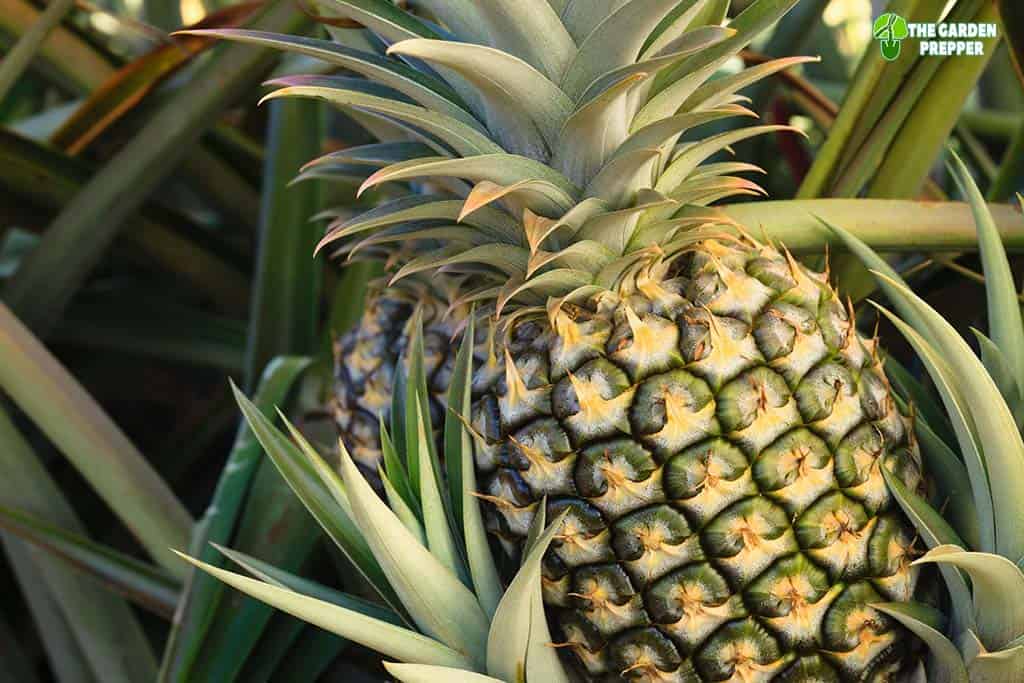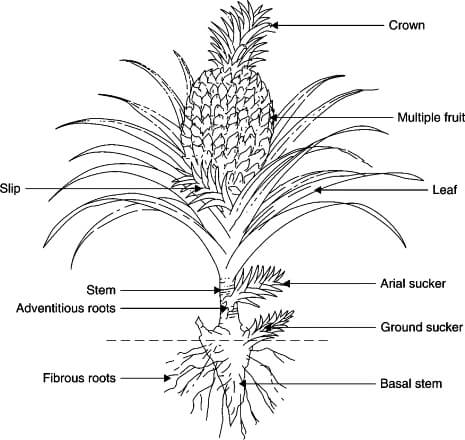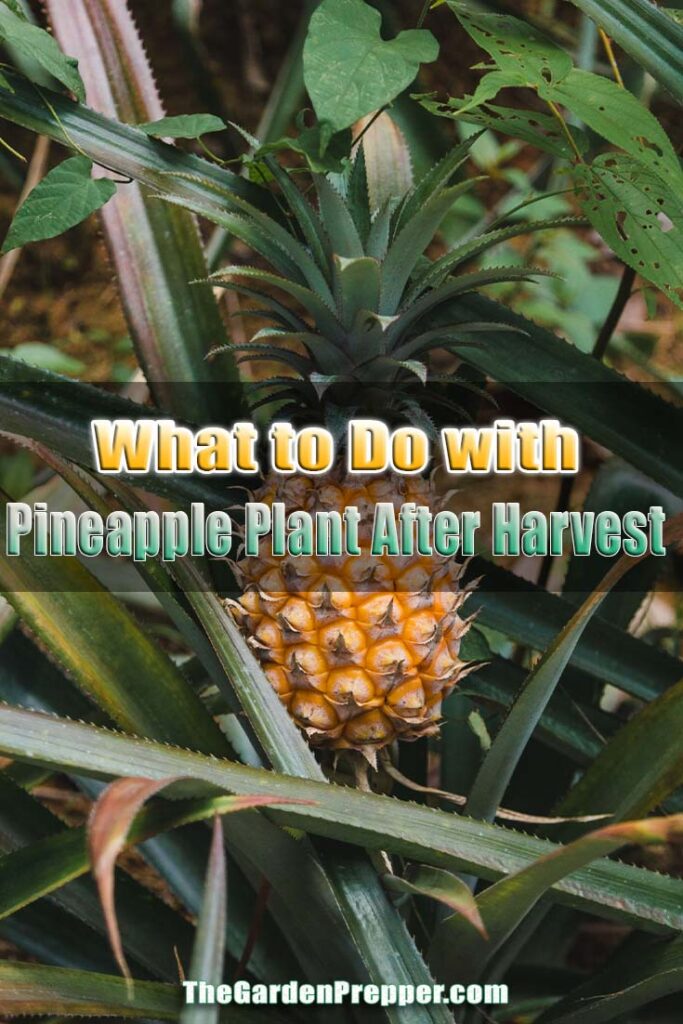You have already harvested a fresh and juicy pineapple, happy with your new fruit. But wait, before you go back home to slice it up, what happens to the mother plant?
Unfortunately, the pineapple plant would due after it fruits… sort of. Pineapple plants don’t fruit more than once, so when you harvest your one pineapple, the mother plant won’t fruit again. While the pineapple plant would die after the fruit crop cycle (which takes 32-46 months), they can produce suckers or ratoons that grow around the main plant as it flowers and fruits.
So while the mother plant slowly dies after fruiting is complete, those large ratoons would continue growing, eventually producing new fruit. With that said, you’re probably wondering what to do with pineapple plant after harvest.

What to Do with Pineapple Plant After Harvest
As mentioned, there will be ratoons produced throughout the growing and fruiting process. The mother plant may die, but it still continues to produce these ratoons and other types of babies.
- Crowns: These are the leafy top portions of the fruit that can propagate new pineapples.
- Ratoon Suckers: These are suckers forming around the base of your mother plant
- Suckers: These would form between the leaves’ axils.
- Slips: These form along the base of your fruit, right below where it’s attached to its mother plant, though this depends on the variety grown.

You can then use those babies for various uses, such as propagating them into a houseplant to design your home or growing more fruits. You may repot ratoons after the mother starts to die back, either outdoors or indoors, where they can eventually produce fruit.
When wondering what to do with pineapple plant after harvest, the simple answer is to just let your mother plant stay in place. Think of it as the mother plant generating babies, which would continue producing more fruits. When you properly care for the mother plant, its babies will stay healthy, eventually producing additional fruits.
To care for the mother plant properly for the ratoon suckers to develop into healthy and fruit-producing plants, follow these tips:
- Water your plants weekly, sometimes daily when the weather is hot and dry
- Fertilize the plant every month using a general-purpose and water-soluble fertilizer, pouring it directly on the ratoon suckers. After six months when its root system develops, you can apply the fertilizer to your soil.
How to Handle Slips and Suckers
Now that you know what to do with pineapple plant after harvest, what should you do with the mother plant’s babies?
For ratoons and suckers, allow them to grow and develop around the mother plant. In a year, they will begin producing additional pineapples. But if you see too many ratoon suckers crowding each other, it’s best to remove some of them so there will be proper space for the rest to develop.
If you don’t intend on planting ratoons and suckers, just pull them off the ground. For those who want to plant suckers, let them develop for a few months and get as many root systems as you can as you remove them from their area.
When you are dealing with suckers and slips, let them develop into a proper size before you remove them from their mother plant. Once you harvested the main pineapple fruit, let the slips and suckers stay on the mother plant for a few weeks before twisting them off and planting them. The larger they are, the bigger the chance of survival when they are removed from the main plant.
Let the babies dry for a few days in a shaded area before planting. It can take 1-2 years before the suckers and slips produce fruit.
When the slips and suckers have dried, plant them directly in your garden in a sunny area with well-drained soil. You can also place it in a 3 to 7-gallon container with bottom drainage and well-draining potting mix, which allows it to grow larger plants and fruits. Place your offsets in the center of your container or appropriate are in the garden.
Firm up the soil around the plants and water properly, watering when the top inch of its soil is dry. Fertilize the plant every month with a general-purpose and water-soluble fertilizer, pouring it directly on your pineapple plant. Once the root system develops, apply fertilizer to its soil.
Wrapping It Up
When it comes to pineapples, its mother plant will produce only one pineapple, but its babies can produce more, provided that they are well taken care of. Use the tips and information mentioned above to care for your pineapple plants well and get the most out of them. Happy gardening!
